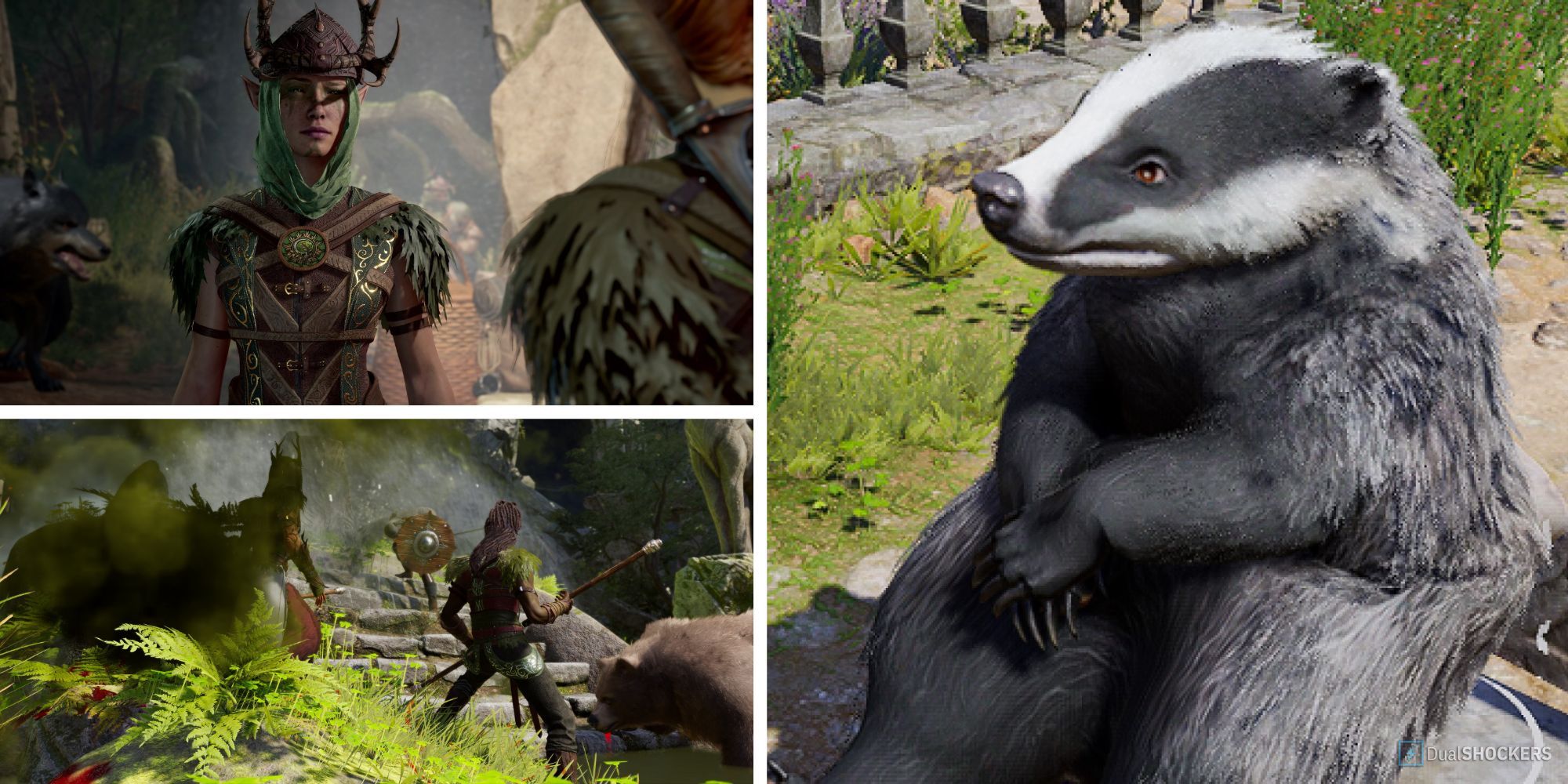Baldur’s Gate 3, the D&D video game adaptation, requires you to assemble a party of 4 adventurers, each fulfilling unique roles in various situations. These characters not only contribute to combat effectiveness but also excel in skill checks outside of battles. It is crucial to have a well-rounded team to avoid unfavorable circumstances. If you’re interested in the game and are a fan of The Witcher franchise, here are some related games you should try out.
One of the most versatile classes in Baldur’s Gate 3 is the Druid. With the ability to transform into different creatures through wild shape, the Druid provides flexibility in approaching fights. For example, you can shapeshift into a bear to control aggro or a spider to immobilize enemies with webs. Additionally, Druids excel in non-combat encounters by assuming forms like cats to effortlessly bypass potentially hostile situations. To optimize your Druid build, here’s what you need to know.
Updated by Chad Thesen on August 10, 2023: We’ve updated this guide to include a new section on Druid leveling choices. This section covers the decisions you should make at each level up and the gear you should acquire to maintain high performance.
When it comes to ability distribution, Wisdom is essential for Druids as it powers their spells and enhances their understanding of the world. Leave intelligence-based tasks and reading to characters proficient in these areas. Additionally, let the character with the highest charisma handle conversation. As a Druid, focus on maximizing your Wisdom for potent spells and a strong perception check. Strength and Dexterity don’t require investment since you can adjust these stats through wild shape.
Primary Abilities (Maximize): Wisdom and Constitution
Secondary Abilities: Dexterity and Strength
Dump Abilities (Ignore): Intelligence and Charisma
Choosing the right race is crucial for optimizing your Druid. While there are several good options, the Wood Elf proves to be the most effective. This race boosts your primary ability, Wisdom, and offers advantages such as increased speed compared to other races, darkvision, and proficiency in Perception and Stealth. Elves also have resistance to charm spells and immunity to magical sleep.
Another viable race option is the Lightfoot Halfling. Though it lacks a Wisdom increase, the Lucky trait provides the opportunity to reroll failed rolls. Lightfoot Halflings also gain proficiency in Stealth. Gold Dwarves are a reliable choice as well, offering darkvision, extra health, and a +1 Wisdom bonus.
To excel in various skills, choosing the right background is essential. The Folk Hero background grants proficiency in Survival and Animal Handling, both Wisdom-based skills. Combined with the Perception proficiency from being an Elf, you cover three out of five wisdom-based skills. At character creation, choose Medicine and Insight to complete your skill set. Alternative background options include Outlander, which provides proficiency in Survival and Athletics, beneficial for wild shapes requiring high strength.
When it comes to subclass choices, Circle of the Moon stands out. This subclass offers more wild shape options, with the bonus action feature allowing you to transform quickly. The Moon Druid grants access to powerful forms such as bears and elephants, enabling you to fulfill frontline combat roles effectively. Additionally, you can utilize the Lunar Mend ability to heal yourself by consuming spell slots, ensuring your survival during dire situations.
Other subclasses like Circle of Spores offer increased damage potential without relying on wild shape, making them ideal for parties with versatile roles. Circle of the Land is recommended for beginners, with the ability to regain spell slots efficiently and act as a dedicated healer. However, keep in mind that wild shaping requires an action, which can slow down combat.
When it comes to feats, prioritize ability improvements to enhance your Wisdom to 20, as you will have limited opportunities for feats while multiclassing.
For this build, you’ll be multiclassing into Barbarian, allowing you to utilize the Barbarian’s Rage feature even when wild shaped. This grants increased damage output and resistance against certain types of damage. To optimize your build, take 2 levels in Druid, followed by 1 level in Barbarian, and then the remaining levels in Druid until reaching the level cap of 12.
As for spells, Druids have a wide array of options that cater to different scenarios. Below are some valuable spells to consider:
– Guidance: Provides a +1d4 bonus to ability checks for an ally.
– Goodberry: Conjures four magical berries that restore 1d4 hit points when consumed.
– Faerie Fire: Illuminates targets with colorful light, granting advantage on attack rolls against them.
– Healing Word: Allows you to heal a visible creature.
– Heat Metal: Causes metallic objects to become hot, damaging enemies.
By following these guidelines and optimizing your Druid build, you’ll be a formidable and versatile asset to your party in Baldur’s Gate 3.
Denial of responsibility! TechCodex is an automatic aggregator of the all world’s media. In each content, the hyperlink to the primary source is specified. All trademarks belong to their rightful owners, and all materials to their authors. For any complaint, please reach us at – [email protected]. We will take necessary action within 24 hours.

Eugen Boglaru is an AI aficionado covering the fascinating and rapidly advancing field of Artificial Intelligence. From machine learning breakthroughs to ethical considerations, Eugen provides readers with a deep dive into the world of AI, demystifying complex concepts and exploring the transformative impact of intelligent technologies.


